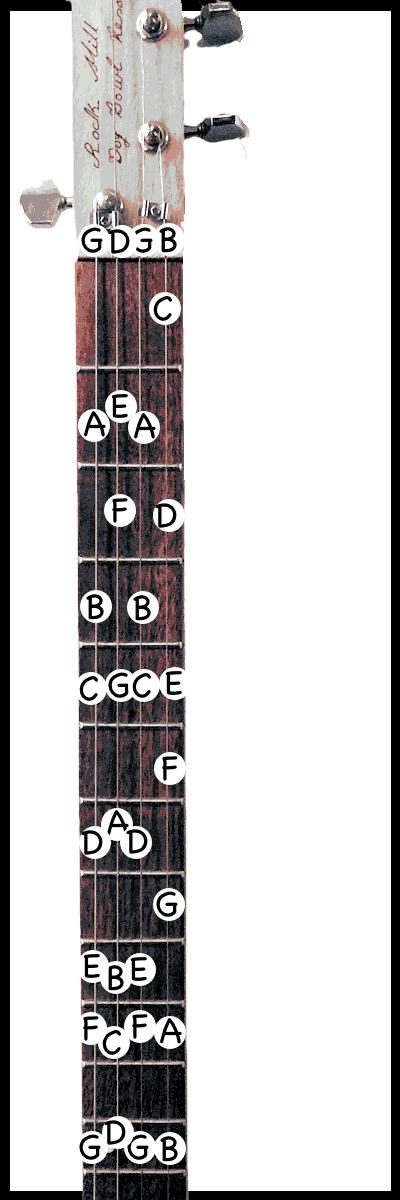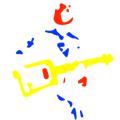
Your guitar is a musical instrument and so when you tune it up it'll play musical notes. It's handy to be able to name these notes and the standard way to do it is by using the first 7 letters of the alphabet, A through to G.
Tune your guitar from low to high: G, D, G and B and play each of them one at a time.
Notice that the open top string plays a B and the note one fret higher is a C and that every time there's a B, the next one is a C. Find an E note and you'll see that the one higher than that is an F, every time.
Find as many B notes as you can and play both the B and the C just above it, do the same for E and F.
These are the only two pairs of notes that do this, all of the others are two frets apart.
Again find as many B notes as you can and play the A note 2 frets below, then the B and then the C one fret higher, listen for the dfference.
The way that notes are arranged, either one or two steps apart defines the shape of a scale and the music that you make from it. This particular arangement of notes when you star and end on a C notes is a C major scale.
Relative names
That's not the only way to name the notes. In the chord and scale diagrams I refer to them using numbers 1 through 7. Numbers define relationships and so naming the notes like this tells us more about how they connect with each other. Letter names describe the actual pitch of the note and they never change.
In the key of G, the G note is a big deal, all of the other notes kind of defer to it. So if we call that first note the 1 it follows that A will be 2, B will be 3 and so on.
Play all of the natural notes (the ones with letters in the diagram) on the bass string and count them so that G is 1, A is 2 etc. until you get to the 12th fret G.
What about the ones with no letters?
So we use 7 letter names but there are 12 notes. Tonal music doesn't use all 12 but picks out a group of them and generally ignores the others. Way back folks decided that a particular subset of these 12 notes, 7 of them, worked well together and they called these 7 notes the major scale. The notes written here are all of the notes in the C major scale and we call them natural notes. To name the other notes you need to use accidentals the sharp (#) and the flat (♭) signs. The note one fret higher is sharp and the note one fret lower is flat.
The notes in the key of G are: G A B C D E and F#. Notice that it's almost the same as C but we replace the F with the note one fret higher, the F#.
The table below describes how all of the natural notes fit in the key of G.
| G | A | B | C | D | E | F |
| 1 | 2 | 3 | 4 | 5 | 6 | ♭7 |
Straightforward enough until you get to the last one, the ♭7. Because F is not in the key we can't call it the 7, in fact it's one fret lower so we call it the ♭7. Likewsie in the key of G a B♭ note would be the♭3.
